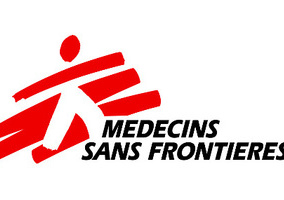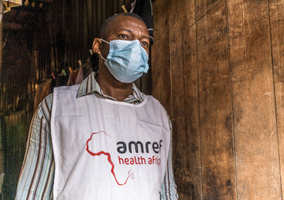Many charities put out powerful imagery to show the work they are doing, and to communicate the importance of their projects. Fundraising campaigns are often reliant on evocative imagery, which can elicit powerful responses. But recently there has been an increasing awareness of the problematic use of imagery in some cases.
As organisations in the sector work to become anti-racist, one area charities are making changes in is around storytelling, and therefore images. Colonialism can manifest in imagery, positioning the subject as the ‘other’ and the viewer as the ‘saviour’. Though just one part of a wider need for decolonisation and anti-racism work, images form a key part of ethical storytelling.
However, as charity budgets tighten, will they stick to their decolonised imagery strategies or revert back to using pictures that present those in need as “helpless victims”?
‘Charities have contributed to negative stereotyping’
Ivy Lahon, head of creative content and stories at Save the Children, says: “Historically, we know that some of the communications within the sector have definitely contributed to negative stereotyping – where subjects have been seen in their moment of trauma, or where they looked distressed.
“The danger historically was that the same type of image was used over and over again [...] subtly perpetuating that they are helpless victims, and that they don't have any agency.”
As images have sustained this narrative, this has meant that people in marginalised communities have sometimes “been defined by their trauma”, she says.
To counter that, Save the Children aims to show a more holistic picture of people in need of support so that the trauma they might experience is not defining them – “it's just one element of a story”.
“By showing a 360 view of a person, by showing context, by showing detail, we’re humanising that person. So that's the opposite of the old type of storytelling which was very much objectifying,” says Lahon.
‘Undoing the colonial narrative’
Bond, the UK network for INGOs, has been focusing on narrative change. Maryam Mohsin, head of media and communications, says this means “challenging existing narratives that exist around communities that we work with, but also the very white gaze that we see other countries through”.
Mohsin says George Floyd’s murder and Black Lives Matter (BLM) protests in 2020 “shifted the dial” on anti-racism work in the sector.
“There's no doubt that there was something significant about having to look very directly at the hard face of racism, to make everyone aware that there is a huge societal and cultural shift here that just needs to happen.
“The way it rippled into the INGO sector is around confronting the narratives that we’re perpetuating, through not just our comms, but also just how we work.”
Mohsin says sometimes INGOs may see situations “through one lens” so this work is about “undoing all of the decades of this colonial narrative that we've been feeding as a sector”.
At Save the Children, Lahon says the BLM 2020 protests “stepped it up for us a gear” – “that was one of the catalysts that really galvanised all of us as a global movement”.
Indeed, the charity made a public statement in 2020 on how in general it would reassess old ways of working and shift its programme work.
For Lahon, “the most pertinent point” was a promise around reconstructing storytelling and how the charity would work towards removing stereotypes and removing ‘othering’, as well as any comms that strip agency or dignity from the children they work with.
The charity also committed to removing white saviourism and white gaze from communications, as well as to making sure “the lived experiences of the families that we work with are really at the heart of our communication”.
Amref Health Africa has also been working on ethical storytelling guidelines and Maureen Cherongis, media and external relations officer, says she has seen a sector-wide shift “from the old way, the paternalistic way, of storytelling”.
‘There is value in giving a very honest depiction’
Cherongis suggests organisations should look at storytelling in terms of partnership and collaboration and adds “the emphasis should also be placed on the process not the outcomes”.
“Ethical working should be at the forefront of any fundraising communications, so that they can ensure authenticity.”
Mohsin also emphasises the importance of authenticity, and gives an example of a charity using images of a lone child on a bed in a hospital, looking frail, as being misleading. In reality, this was just the way the image was captured – they were with a doctor from the local community and a parent.
“So you've got to ask the question, ‘is it right that you are basically zoomed in on that child and given a completely different perspective and narrative by making that decision about what's happening in that situation?’ That's not the right thing to do, because you're eliciting the response that you want, but it's not necessarily based on the truth.”
“What is that image perpetuating in terms of a narrative? It is basically saying that that child is there on their own and there's nobody there to help […] it’s suggesting that there is absolutely no one apart from you, ‘the saviour’.”
Hence, Mohsin says, “there is value in giving a very accurate, honest depiction”.
“It’s that idea that just pulling in funding by giving an inaccurate representation about what is going on is a good enough justification for perpetuating particular narratives and the lack of dignity that you've imposed on this child and family.”
Cherongis says by focusing on one area, “you’re altering the truth” and those in editorial must consider “the power that you have”.
‘Passing the lens’
Bond recently published a guide on how charities can become locally-led and anti-racist, some of which involved focusing on communications.
Mohsin says consent is really important, as is translating influence and working with communities. She explained many organisations are re-assessing what consent looks like in their organisation, and focusing on actions such as translating consent forms and getting feedback from participants.
“There is lots of talk about passing the mic, and I think there's something around passing the lens as well.”
Mohsin explains this doesn't necessarily mean that those outside a community who have skills bearing witness through photography don't have a role to play “because I think sometimes the sector can lack a bit of nuance” but that it is about what makes sense and is appropriate.
“Whenever you can, using local photographers that understand context, is really important,” she adds.
Lahon adds NGOs which have been around for a long time should examine their ways of working.
“It’s so important for organisations to be aware of our limitations and our blind spots, and to constantly be questioning and asking ourselves whether we are doing the right thing and whether we are holding ourselves accountable to the families and the children that we’re working with.”
Save the Children recently assessed image guidelines “not just aesthetically what our photography looked like, but also who was taking our photographs and in what context they were taking them in, and the process in which we gathered our content”.
It developed a new set of visual guidelines, and did things like making sure the angles they were shooting people in were appropriate.
“We were standing above our subjects and looking down on them” and now they go to the child’s level.
“We know how powerful imagery can be as a tool to understand a person or community” says Lahon, so “those kinds of very subtle changes” are key.
Moreover, most of their shoots include people from the local region, where possible, as “the vast majority of cases we found that having someone with that local knowledge, that lived experience, will potentially have a different viewpoint”. Going forward, the charity hopes to ramp up involvement in co-creating content with children.
Public welcome imagery change
Mohsin adds that if the sector tells a more honest narrative to supporters and audiences, “we're going to have a much stronger relationship with them then we will have if we just give them a false narrative”.
She says the public appreciate and value honest conversation, as well as the complexity, around certain issues.
Indeed, Lahon says the reaction to Save the Children’s changes “has been massively positive”.
“I think the beauty of this shift is that not only is it the right thing to do, but also we found that audiences have moved on and they are not engaging with that kind of imagery anymore – the guilt trippy, very stereotyping, very othering, hopeless images that leave somebody feeling sad and like a situation might be futile. That tone of image just doesn’t cut through anymore.”
In the charity’s research, it showed audiences responded well to positive stories, showing images with a child looking empowered, and even those focused on small day-to-day details.
“One thing we found that is really successful is to highlight those points of connection and similarity, of which there are so many,” says Lahon.
“It provides that universal connection, which is far more powerful, then something which makes a person feel very distanced from the child.”
Cherongis says Amref’s research with the University of East Anglia and University of the Arts London showed fundraising appeals led by the people they intend to help can raise more money and be more effective than those created by the charity itself.
‘Real test’ as fundraising gets harder
Mohsin suggests “the real test is going to come over the next few years, because now we are fundamentally in a recession and a cost-of-living crisis. Fundraising is going to be significantly harder, and my concern is always that when times get tough INGOs will go back to the images that they know, or that they think, will pull in the funding that they need. I really hope that's not the case, but the reality is time will tell.”
She says to those that have been championing this agenda “now is not the time to stop banging on about it – if anything, ramp it up. You need to make the case that this is the right thing to do fundamentally.”
Isobel Spaven-Donn, communications manager at Amref, says: “I think there is, within the sector, a recognition that we have to shift power, and the reasons why we have to do that.”
She suggests “the needle has moved enough” that going back to such practices within a UK context “would be seen very poorly” – “there is a real understanding in the sector that things have moved, and must move, forward”.
Lahon adds that “in general, audiences have moved on” and thinks the more imagery is discussed in the sector, “the more propensity there is to change and to influence each other”.
Ultimately, Cherongis says the sector must “recognise that we have been doing something which was not right or something which was not appropriate” and make changes.
“We can only learn if we try and test until we get where we want to be as a charity sector,” she concludes.
Related Articles












